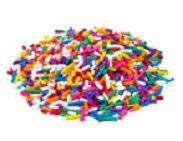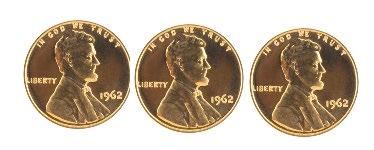SUPPLY CHAIN ANALYST: STOCKING THE SHELVES


LESSON PLAN OVERVIEW
Career: A supply chain analyst plans the purchase, storage, and supply of the materials needed to produce a product. They gather and analyze supply chain data to help improve processes and reduce production costs.
Lesson: This lesson plan provides activities for students to learn about supply chain analysts and the work they do. Students will perform a simple version of a supply chain task — maintaining the inventory of a grocery store. They will add items and subtract the number of items sold to determine how many are needed to restock the inventory. In a second activity, students will practice another simple supply chain task, this time for an ice cream shop. They will choose the ingredients for making an ice cream sundae and then buy the items in a classroom “grocery store.”
Grade Level: Elementary Grades
Learning Objectives:
〉 Students will be introduced to the supply chain analysis career and practice some basic supply chain analyst job tasks.
〉 Students will learn how to maintain the inventory of a grocery store by adding items and subtracting the number sold to find what is needed to restock the inventory.
〉 Students will pretend working in an ice cream shop by choosing the ingredients needed to make an ice cream sundae and buying the items in a pretend grocery store.
Materials Needed:
Activity #1: Stocking the Shelves
〉 Student worksheet
Activity #2: Buying Inventory
〉 Student worksheet
〉 Items for classroom grocery store
〉 Optional: Play money – Included
〉 Teacher Discretion – bring items to have students make ice cream sundaes in class
TEACHER GUIDE
Lesson Instructions: The following activities will help you introduce students to the supply chain analyst career and some basic supply chain tasks. Begin the lesson by reading the Class Message below to your students, then have them watch the recommended career video. Afterwards, facilitate a discussion using the Class Questions listed below.
After the discussion, students will work on two activities. Each activity has a printable worksheet with student instructions and areas to record their work. Have students read their worksheets before beginning each activity.
You should also familiarize yourself with the student worksheets to provide assistance when needed, help demonstrate any procedures, and help in facilitating the discussion that ends each activity.

Class Message: Today, we are going to learn about supply chain analysts and what they do in their jobs. How many of you have gone to the grocery store with your parents? Have you ever wondered how all of the food got in the store? Who chooses what food is sold? Who knows where to buy all the food that the store sells? It takes a lot of time and planning to supply the grocery store with all of the products that customers want to buy.
We’re going to learn how supply chain analysts keep stores stocked with food and other groceries. You’ll pretend to be a supply chain analyst by adding and subtracting to find out what you need to buy to restock the grocery store’s shelves. You will also pretend being a supply chain analyst who works in an ice cream shop. You will choose the ingredients needed to make an ice cream sundae and then buy those things in a pretend grocery store.
Now let’s watch this short video to learn more about supply chain analysts.


Class Discussion Questions:
〉 What are some of the food products you have seen at the grocery store?Response Suggestions: candy, fruit, cereal, milk, ice cream, etc.
〉 How do you think all of these things got to the store and put on the shelf?Response Suggestions: delivery person, someone at the store ordered them, someone at the store put them there, etc.
〉 Why do you think it is important to restock the shelves after people buy food and other things? - Response Suggestions: so other people can buy them, so the store never runs out of the item, etc.
Activities Overview: This lesson plan includes two student activities. In Activity #1, students will practice maintaining the inventory of a grocery store. In Activity #2, Students will pretend being a supply chain analyst for an ice cream shop, identifying and purchasing supplies to make sundaes.
Read and familiarize yourself with the student worksheet for each activity.
Activity #1: Stocking the Shelves
Students will learn how supply chain analysts keep stores stocked with food and other groceries. They’ll pretend to be a supply chain analyst by adding and subtracting to find out what they need to buy to restock the grocery store’s shelves. In this scenario, the grocery store likes to have 15 of each item on the shelves.
Activity Instructions:
〉 Hand out the student worksheet.

〉 Introduce the activity and guide students as needed.
〉 After completion, facilitate a discussion using the questions for the activity.
Activity Results: Students used adding and subtracting to maintain the inventory in a grocery store.



How many apples do you have?
How many oranges do you have?
If you sell 4 apples, how many are left? 4 How many apples do you need to have 15 on the shelf?
If you sell 3 oranges, how many are left?
How many oranges do you need to have 15 on the shelf?


Activity Discussion:
How many bunches of grapes do you have? 10
How many bunches of bananas do you have? 7
If you sell 6 bunches of grapes, how many are left? 4
If you sell 7 bunches of bananas, how many are left?
How many bunches of grapes do you need to have 15 on the shelf? 11
How many bunches of bananas do you need to have 15 on the shelf? 15
〉 What do you need to do when you run out of fruit? - Sample answers may include: buy more fruit to sell, order more fruit, put more fruit on the shelf, etc.
〉 How do you think a grocery store gets more fruit? - Sample answers may include: they order it from a fruit farm, they get it from storage, they call someone to deliver it to them, etc.
〉 What would you do if a store doesn’t have the fruit you want to buy? - Sample answers may include: go to another store, tell a worker they are out of fruit, buy something else, etc.

Activity #2: Buying Inventory
Students will pretend being a supply chain analyst for an ice cream shop. They will choose the ingredients for an ice cream sundae and then buy them in the classroom grocery store.
Activity Instructions:
〉 Before the activity, print and cut out as many ingredient pictures needed for the classroom grocery store. Set up a grocery store in the classroom. Students will shop for the items needed to make their ice cream sundae.
〉 Introduce the activity and guide students as needed.
〉 Hand out the student worksheet. Students will circle the items on the worksheet they want to make their ice cream sundae.

〉 Students will shop in the grocery store to buy what they need to make their sundaes.
〉 Optional: Print the play money and have students use the money to purchase the ingredients and set the cost for each item.
〉 After completion, facilitate a discussion using the questions for the activity.
Activity Results: Students selected the ingredients to make an ice cream sundae and purchased them in the classroom grocery store.
Activity Discussion:
〉 What do you think would happen if you ran out of things to make the ice cream sundaes? - Sample answers may include: would not be able to make certain sundaes, would have less items to choose from, people may go to another shop, etc.
〉 What could you do to keep from running out of ice cream and toppings? - Sample answers may include: make sure you have enough on hand, order more items, order larger amounts of items, etc.
〉 What would your customers do if you ran out of toppings or ice cream? - Sample answers may include: they would go somewhere else; they would be disappointed; they would choose other items; etc.

CAREER INSIGHT
Career Highlight: This lesson plan highlights some of the basic duties of supply chain analysts. See the Employers in My Area section to contact businesses and organizations in your area about classroom demonstrations, on-site visits, or other additional career exposure opportunities.
Featured Career:
Supply Chain Analyst
Career Descriptions: Supply chain analysts analyze and coordinate an organization’s supply chain the system that moves a product from supplier to consumer. They manage the entire life cycle of a product, which includes how a product is acquired, allocated, and delivered.
Supply chain analyst typically do the following:

〉 Manage a product’s life cycle from design to disposal
〉 Direct the allocation of materials, supplies, and products
〉 Develop business relationships with suppliers and clients
〉 Understand clients’ needs and how to meet them
〉 Review logistical functions and identify areas for improvement
〉 Propose strategies to minimize the cost or time required to transport goods
Supply Chain Analysts oversee activities that include purchasing, transportation, inventory, and warehousing. They may direct the movement of a range of goods, people, or supplies, from common consumer goods to military supplies and personnel.
Logisticians use software systems to plan and track the movement of products. They operate software programs designed specifically to manage logistical functions, such as procurement, inventory management, and other supply chain planning and management systems
Other Names for this Career: Global Supply Chain Vice President, Material Requirements Planning Manager, Solution Design and Analysis Manager, Supply Chain Director, Global Consumer Sector Vice President, Supply Chain Manager, Global Supply Chain Director, Supply Chain Vice President




















